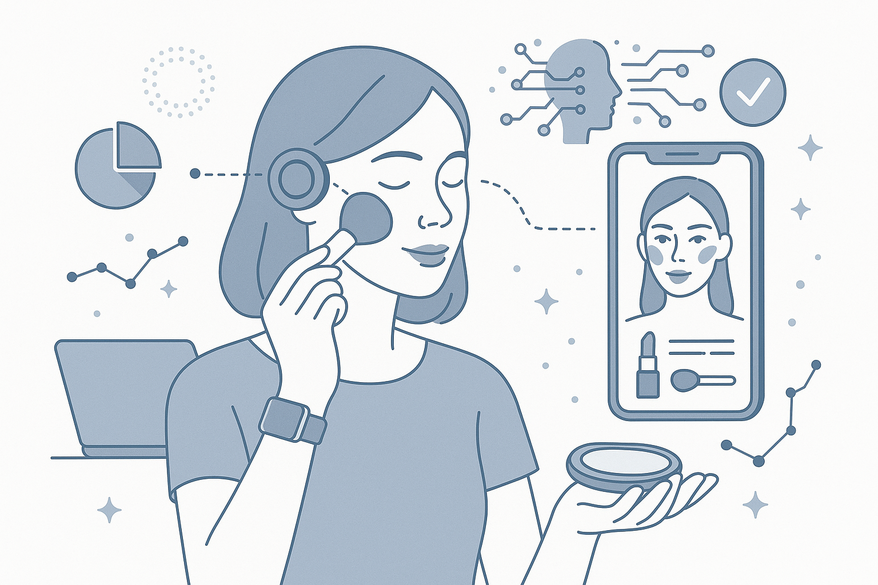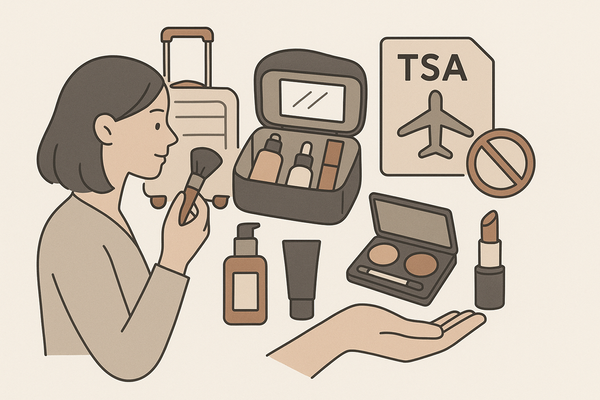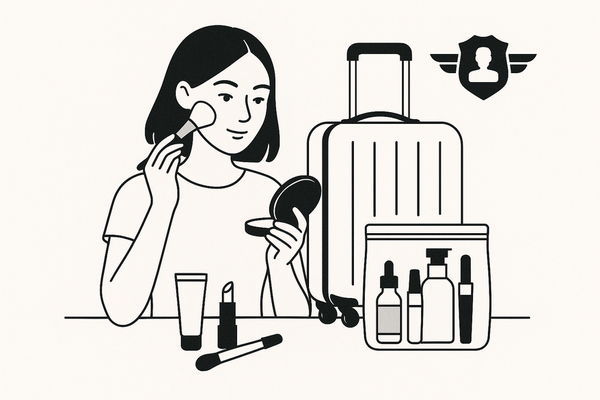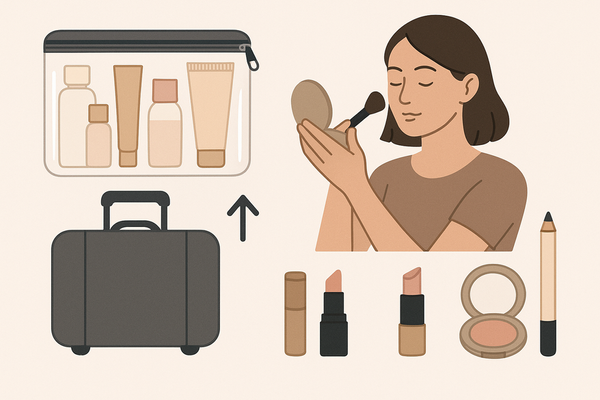How Wearable Tech Beauty Integration Is Revolutionizing Makeup Apps and Routines
Discover how wearable tech beauty integration is transforming makeup routines with AI-driven apps, providing personalized, data-centric beauty experiences.

Estimated reading time: 6 minutes
Key Takeaways
- The fusion of wearable sensors and beauty apps enables hyper-personalized routines based on live skin data.
- Popular devices include LED masks, microcurrent tools, and AR smart mirrors for at-home treatments.
- Makeup app integrations offer real-time AI-driven product suggestions and AR try-on experiences.
- Consumers benefit from more accurate, engaging, and effective beauty regimens.
Table of Contents
- Overview of Wearable Technology in Beauty
- Exploring Makeup App Integrations
- Benefits of Wearable Tech Beauty Integration
Introduction
Wearable tech beauty integration is the seamless combination of sensor-equipped gadgets—like smart masks or skin-analyzing bracelets—with makeup apps, AR try-on mirrors, and AI-driven skincare recommenders. This fusion delivers hyper-personalized, data-driven beauty experiences tailored to your unique skin profile.
Today’s beauty consumers demand convenience, interactivity, and true customization. Advances in Bluetooth, 5G, and machine learning power a shift toward real-time skin health insights, automated product suggestions, and virtual try-on experiences that mirror salon-grade consultations.
Whether you’re a beauty pro, an app developer, or a tech-savvy consumer, you’ll discover actionable insights to harness wearable tech beauty integration in your daily routine. For more on how AI makeup coaches are reshaping personalization, see our AI Makeup Coach guide.
Section 1: Overview of Wearable Technology in Beauty
Wearable technology in beauty covers sensor-equipped gadgets worn on the body to monitor skin metrics or deliver non-invasive treatments. These devices fuel beauty integration by collecting live data on hydration, elasticity, UV exposure, and more, then feeding insights to apps or platforms.
- Sensor-equipped wearables for skin health tracking
– Continuously measure moisture levels, pH balance, and UV index.
– Alert users to dehydration or excessive sun exposure.
– Brands use aggregated data for R&D and personalized marketing. - LED therapy masks & microcurrent tools for at-home rejuvenation
– Red LED light boosts collagen; blue kills acne-causing bacteria.
– Microcurrent devices stimulate muscle tone under the skin.
– At-home anti-aging treatments rival professional spa sessions. - Connected ecosystems linking wearables to apps & cloud accounts
– Data syncs over Bluetooth or Wi-Fi to smartphone dashboards.
– Many devices hold dermatological validation for accuracy.
– Users review long-term skin progress charts and share with pros.
Popular Devices Powering Integration
- Foreo Luna 5
– App-driven cleansing adjustments via built-in T-SONIC™ sensors.
– Real-time skin analysis guides brush intensity and duration.
– Users report gentler exfoliation and fewer breakouts. - Omnilux Contour FACE
– Home LED mask with multi-wavelength panels for collagen support.
– Clinically proven for wrinkle reduction and skin firmness.
– Simple app timer and progress tracking. - AR-enabled Smart Mirrors (HiMirror, CareOS)
– Simulate makeup looks using facial-mapping algorithms.
– Provide weekly skin reports on spots, wrinkles, and texture.
– Offer step-by-step tutorials personalized to your skin map.
Real-World Impact
According to Future Market Insights, the global wearable beauty market is projected to grow at a double-digit CAGR through 2027. Consumers value the at-a-glance data and suggestions these smart devices deliver. Clinics and spas also adopt connected masks and sensors to enhance in-office diagnostics.
Section 2: Exploring Makeup App Integrations
Makeup app integrations connect wearable tech and digital beauty platforms so that data flows seamlessly from device to dashboard. This tight link transforms static routines into dynamic, AI-driven experiences.
Defining Makeup App Integrations
• Bluetooth/Wi-Fi pairing between device and app creates a two-way data exchange.
• Apps interpret raw sensor data—skin hydration, UV index, elasticity—using AI models.
• Smarter algorithms deliver product suggestions and step-by-step routines.
Technical Functionality
• Real-time sensor data transmission
– Skin metrics captured by wearables sync instantly to the makeup app.
– Data packets usually encrypted to protect user privacy.
• AI-powered recommendations
– Machine learning analyzes historical skin trends.
– Custom makeup or skincare formulations are proposed, considering environment and user goals.
• AR-driven virtual try-on
– Device-captured skin maps guide AR overlays for foundation, lipstick, and eye makeup.
– Users test colors and textures in live video, reducing product waste.
Key examples include L’Oréal Perso, smart mirrors, and app-driven cleansing tools. Brands are also leveraging virtual makeup try-on experiences as discussed in our Virtual Makeup Try-On guide and deepening engagement with interactive AR tutorials.
In fact, tools like Makeup Check AI seamlessly integrate live sensor data with AI-powered routines for personalized recommendations.
Section 3: Benefits of Wearable Tech Beauty Integration
Wearable tech beauty integration delivers clear advantages for both consumers and brands. By merging sensor data with AI insights and AR visualization, the beauty experience becomes more accurate, engaging, and effective.
FAQ
What is wearable tech beauty integration?
It’s the combination of sensor-equipped devices with digital beauty platforms to create personalized, data-driven skincare and makeup routines.
How do makeup apps use sensor data?
Apps receive real-time metrics—like hydration and UV exposure—then apply AI algorithms for product suggestions and AR try-on overlays.
Which devices power this integration?
Popular examples include LED therapy masks (Omnilux), smart cleansing brushes (Foreo Luna 5), and AR-enabled smart mirrors (HiMirror, CareOS).
What are the main benefits?
Users enjoy tailored regimens, improved skin outcomes, and immersive experiences, while brands gain valuable usage insights for R&D and marketing.




